-

The rain this week is focused along the front which is currently draped across northern Florida and along the coast. Areas north of the front should see relatively light amounts of precipitation, while areas along and to the south of the front could see heavy rain and even some flash flooding. The National Hurricane Center…
Posted in: Climate outlooks -
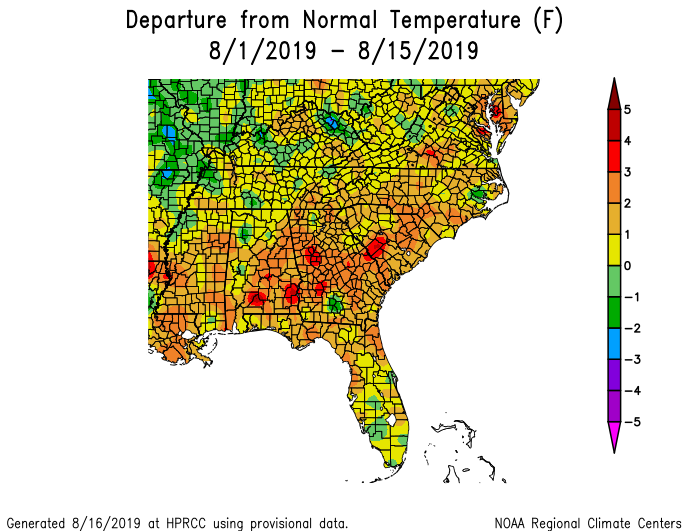
Halfway through August, temperatures in almost all of the region are running above normal in temperature. Only a few isolated spots are cooler than normal. The highest departures are in central Georgia and southeastern Alabama, with values of 3 degrees or more warmer than normal. Precipitation across the region varies quite a bit. The wettest…
Posted in: Climate summaries -
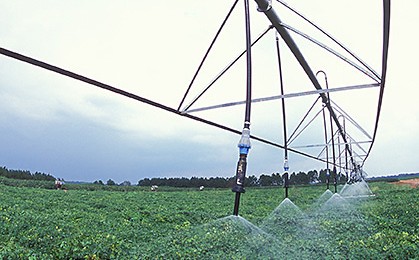
The dry conditions that are affecting parts of Georgia are having a negative effect on the potential yields of dryland peanuts there, according to a news story at https://newswire.caes.uga.edu/story.html?storyid=8070&rss. While irrigated peanuts are doing well, the dry conditions are putting stress on non-irrigated peanuts, potentially dropping yields. About half the crop is planted in fields…
-
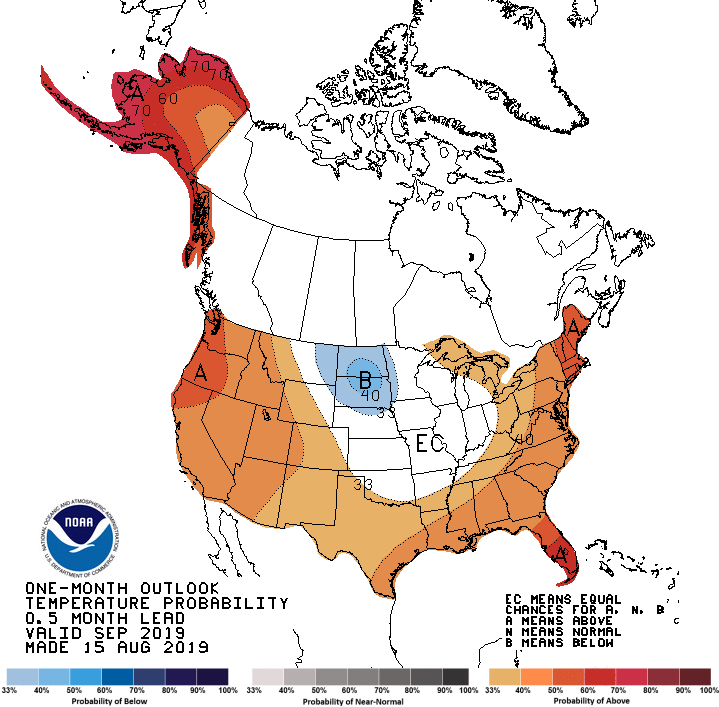
The latest NOAA outlook for September and the September through November period were released today. They show that for both September and the 3-month fall period, temperatures are expected to be warmer than normal. Precipitation is mostly listed as Equal Chances because most of the rain-causing events like summer thunderstorms and tropical storms cannot be…
Posted in: Climate outlooks -
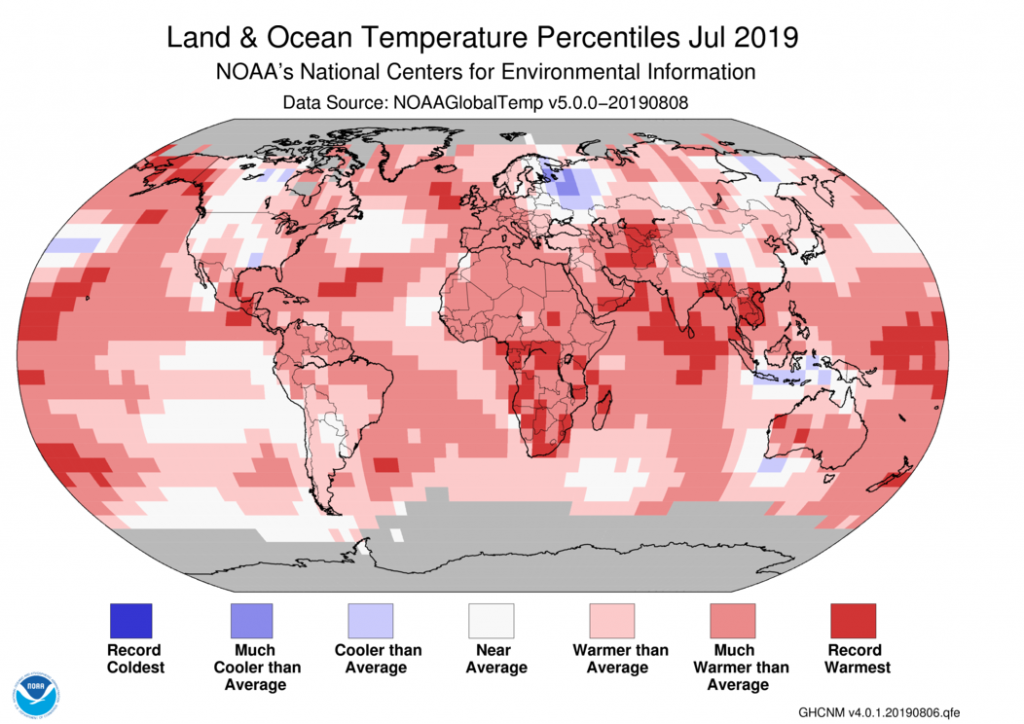
The latest global climate summary for July 2019 was just released today by NOAA. It shows that this past month was the month with the warmest global average temperature since records began in 1880. Just a few small areas were cooler than normal this month. For January through July, the central US was one of…
Posted in: Climate summaries -

The latest Drought Monitor, released this morning, shows that while areas of moderate (D1) and severe (D2) drought expanded only slightly across the region this week, a much larger area of abnormally dry conditions (D0) is now present across the Southeast, including Virginia. This is due to the relatively light rainfall coupled with the much…
Posted in: Drought -
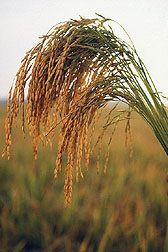
One of the surprising things about increases in carbon dioxide in the atmosphere is that higher CO2 levels appear to lead to a decrease in nutrients in the crops. That counters the argument that more CO2 has a fertilizing effect on plants which is often used to minimize the harm from rising levels of greenhouse…